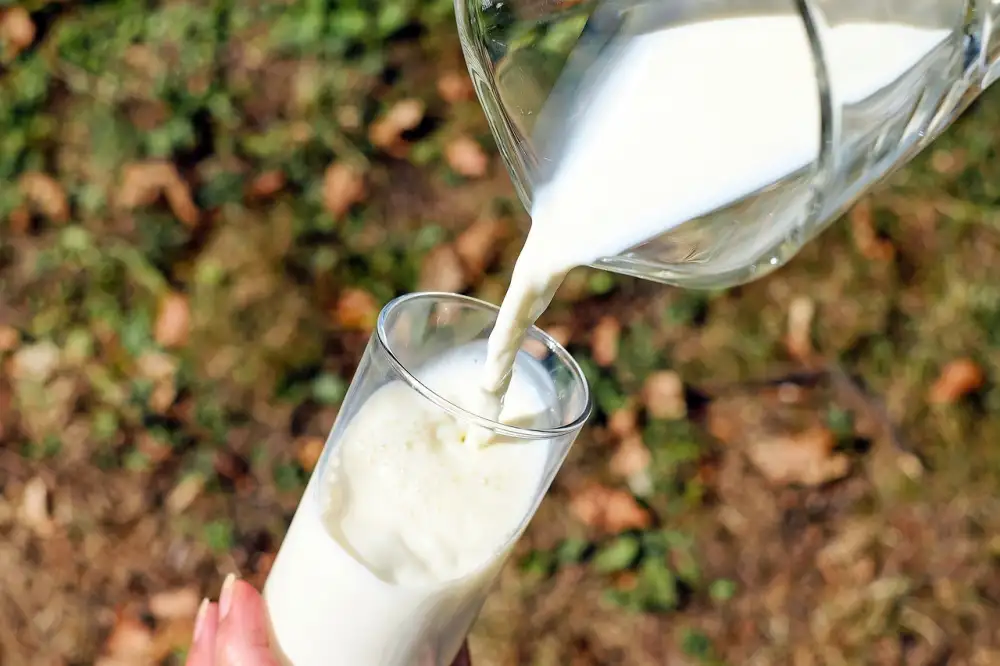Almond Milk Shelf Life: Unveiling the Secrets to Its Freshness and Spoilage Signs

Almond milk has gained popularity as a dairy-free alternative, known for its creamy texture and nutty flavor. However, like any other perishable product, almond milk has a limited shelf life. It is important to understand how long it lasts and the factors that can affect its freshness. In this article, we will delve into the secrets of almond milk's shelf life, explore signs of spoilage, and provide tips on proper storage to ensure you can enjoy fresh and safe almond milk every time.
How Long Does Almond Milk Last?
How long almond milk lasts depends on several factors. Unopened almond milk can typically last up to a week past the printed expiration date when stored in the refrigerator. However, once opened, it is best consumed within 7-10 days for optimal freshness. It is important to note that these time frames are just guidelines and the quality of almond milk may start to deteriorate after this period. Regularly checking for signs of spoilage is crucial to ensure you are consuming safe and fresh almond milk.
Factors Affecting the Shelf Life of Almond Milk
The shelf life of almond milk can be influenced by several factors. One crucial factor is the processing method used. Almond milk that undergoes ultra-high temperature (UHT) processing tends to have a longer shelf life compared to refrigerated or homemade almond milk.
Another factor is the packaging. Almond milk sold in aseptic cartons has a longer shelf life as it is protected from light, air, and contaminants. On the other hand, almond milk sold in plastic bottles may have a shorter shelf life due to potential leaching of chemicals from the packaging.
Additionally, the presence of additives and preservatives can affect the shelf life of almond milk. Some brands may add stabilizers, emulsifiers, or preservatives to extend its freshness. It's important to check the ingredient list if you prefer an almond milk with minimal additives.
Lastly, proper handling and storage play a significant role in maintaining the freshness of almond milk. Exposure to heat or improper refrigeration can accelerate spoilage and reduce its shelf life. By considering these factors, you can ensure that your almond milk stays fresh for as long as possible.
Signs of Spoilage in Almond Milk
While almond milk can have a relatively long shelf life, it is important to be aware of the signs of spoilage. Here are some indicators that your almond milk may have gone bad:
1. Foul odor: If your almond milk has a sour or off-putting smell, it is likely spoiled. Fresh almond milk should have a mild, slightly nutty aroma.
2. Curdling or separation: When almond milk starts to spoil, you may notice curdling or separation. The liquid may appear chunky or lumpy instead of smooth and creamy.
3. Change in color and texture: Spoiled almond milk may develop a yellowish or grayish hue instead of its usual white color. Additionally, the texture might become slimy or clumpy.
4. Unpleasant taste: If your almond milk tastes sour, bitter, or generally unpleasant, it is best to discard it as it has likely gone bad.
It's important to note that these signs can vary depending on the brand and type of almond milk you have purchased. Always check the expiration date and trust your senses when determining if your almond milk is still safe to consume.
Proper Storage Tips for Extending the Shelf Life of Almond Milk
Proper storage is crucial for extending the shelf life of almond milk. Here are some tips to keep your almond milk fresh for longer:
1. Refrigeration: Almond milk should always be stored in the refrigerator, even before opening. The cold temperature helps slow down the growth of bacteria and extends its freshness.
2. Sealed Container: Once opened, transfer the almond milk into a sealed container. This will prevent exposure to air and contaminants, which can accelerate spoilage.
3. Avoid Cross-Contamination: Make sure to use clean utensils when scooping out almond milk from the container. Avoid touching it directly with your hands or allowing any other food items to come in contact with it.
4. Check Expiry Date: Always check the expiry date on the packaging before purchasing almond milk. Using it beyond this date can lead to a higher risk of spoilage.
5. Avoid Temperature Fluctuations: Keep almond milk away from direct sunlight or heat sources as they can cause temperature fluctuations that may affect its quality and shorten its shelf life.
By following these storage tips, you can ensure that your almond milk stays fresh and safe for consumption for an extended period of time, allowing you to enjoy its creamy goodness in various culinary creations.
In conclusion, ensuring the freshness and safety of almond milk is crucial for a delightful culinary experience. By understanding its shelf life and factors affecting it, we can make informed decisions about consumption. Remember to always check for signs of spoilage before consuming almond milk. Following proper storage tips, such as refrigeration and sealing tightly, can help extend its shelf life. So go ahead and enjoy your almond milk knowing that it is fresh and safe to savor every sip!
Published: 31. 12. 2023
Category: Health



